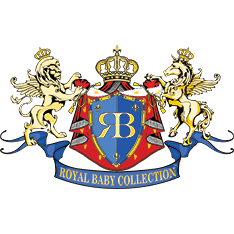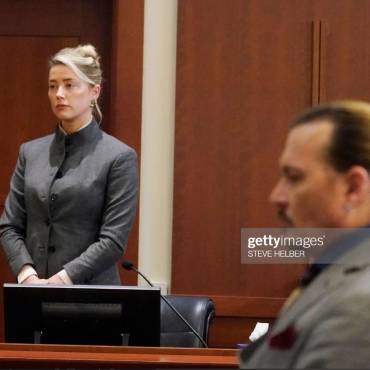Here’s some background information about Ebola, a virus with a high fatality rate that was first identified in Africa in 1976.
Facts:
Ebola hemorrhagic fever is a disease caused by one of five different Ebola viruses. Four of the strains can cause severe illness in humans and animals. The fifth, Reston virus, has caused illness in some animals, but not in humans.
The first human outbreaks occurred in 1976, one in northern Zaire (now Democratic Republic of the Congo) in central Africa: and the other, in southern Sudan (now South Sudan). The virus is named after the Ebola River, where the virus was first recognized in 1976, according to the Centers for Disease Control and Prevention (CDC).
Ebola is extremely infectious but not extremely contagious. It is infectious, because an infinitesimally small amount can cause illness. Laboratory experiments on nonhuman primates suggest that even a single virus may be enough to trigger a fatal infection.
Ebola could be considered moderately contagious because the virus is not transmitted through the air.
Humans can be infected by other humans if they come in contact with body fluids from an infected person or contaminated objects from infected persons. Humans can also be exposed to the virus, for example, by butchering infected animals.
While the exact reservoir of Ebola viruses is still unknown, researchers believe the most likely natural hosts are fruit bats.
Symptoms of Ebola typically include: weakness, fever, aches, diarrhea, vomiting and stomach pain. Additional experiences include rash, red eyes, chest pain, throat soreness, difficulty breathing or swallowing and bleeding (including internal).
Typically, symptoms appear eight to 10 days after exposure to the virus, but the incubation period can span two to 21 days.
Unprotected health care workers are susceptible to infection because of their close contact with patients during treatment.
Ebola is not transmissible if someone is asymptomatic and usually not after someone has recovered from it. However, the virus has been found in semen for up to three months, and “possibly” is transmitted from contact with that semen, according to the CDC.
Deadly human Ebola outbreaks have been confirmed in the following countries: Democratic Republic of the Congo (DRC), Gabon, South Sudan, Ivory Coast, Uganda, Republic of the Congo (ROC), Guinea, Liberia and Sierra Leone.
There are five subspecies of the Ebola virus: Zaire ebolavirus (EBOV), Bundibugyo ebolavirus (BDBV), Sudan ebolavirus (SUDV), Taï Forest ebolavirus (TAFV) and Reston ebolavirus (RESTV).
2014-2016 West Africa Outbreak:
March 25, 2014 – The CDC issues its initial announcement on an outbreak in Guinea, and reports of cases in Liberia and Sierra Leone. “In Guinea, a total of 86 suspected cases, including 59 deaths (case fatality ratio: 68.5%), had been reported as of March 24, 2014. Preliminary results from the Pasteur Institute in Lyon, France suggest Zaire ebolavirus as the causative agent.”
April 16, 2014 – The New England Journal of Medicine publishes a report, speculating that the current outbreak’s Patient Zero was a 2-year-old from Guinea. The child died on December 6, 2013, followed by his mother, sister and grandmother over the next month.
July 2014 – Patrick Sawyer, a top government official in the Liberian Ministry of Finance, dies at a local Nigerian hospital. He is the first American to die in what officials are calling the “deadliest Ebola outbreak in history.”
July 2014 – Nancy Writebol, an American aid worker in Liberia, tests positive for Ebola. According to Samaritan’s Purse, Writebol is infected while treating Ebola patients in Liberia.
July 26, 2014 – Kent Brantly, medical director for Samaritan Purse’s Ebola Consolidated Case Management Center in Liberia, is infected with the virus. According to Samaritan’s Purse, Brantly is infected while treating Ebola patients.
July 29, 2014 – According to Doctors Without Borders, Dr. Sheik Humarr Khan who was overseeing Ebola treatment at Kenema Government Hospital in Sierra Leone dies from complications of the disease.
July 30, 2014 – The Peace Corps announces it is removing its volunteers from Liberia, Sierra Leone and Guinea.
July 31, 2014 – The CDC raises its warning to Level 3. It warns US residents to avoid “nonessential travel” to Sierra Leone, Guinea, and Liberia.
August 2, 2014 – A specially equipped medical plane carrying Ebola patient Dr. Brantly lands at Dobbins Air Reserve Base in Marietta, Georgia. He is then driven by ambulance to Emory University Hospital in Atlanta.
August 4, 2014 – CNN reports that three top secret, experimental vials of the drug, “ZMapp,” were flown into Liberia last week in a last-ditch effort to save Brantly and Writebol, according to a source familiar with details of the treatment. Doctors report “significant improvement.”
August 6, 2014 – Writebol arrives at Emory in Atlanta for treatment.
August 8, 2014 – Experts at the World Health Organization (WHO) declare the Ebola epidemic ravaging West Africa an international health emergency that requires a coordinated global approach, describing it as the worst outbreak in the four-decade history of tracking the disease.
August 19, 2014 – Liberia’s President Ellen Johnson Sirleaf declares a nationwide curfew beginning August 20 and orders two communities to be completely quarantined, with no movement in or out of the areas.
August 21, 2014 – Brantly is discharged from Emory University Hospital. It is also announced that Writebol had been released on August 19. The releases come after Emory staff are confident Brantly and Writebol pose “no public health threat.”
September 6, 2014 – The government of Sierra Leone announces plans for a nationwide lockdown from September 19-21, in order to stop the spread of Ebola. The lockdown is being billed as a predominantly social campaign rather than a medical one, in which volunteers will go door-to-door to talk to people.
September 16, 2014 – US President Barack Obama calls the efforts to combat the Ebola outbreak centered in West Africa “the largest international response in the history of the CDC.” Speaking from the CDC headquarters in Atlanta, Obama adds that “faced with this outbreak, the world is looking to” the United States to lead international efforts to combat the virus. He says the United States is ready to take on that leadership role.
October 6, 2014 – A nurse’s assistant in Spain becomes the first person known to have contracted Ebola outside Africa in the current outbreak. The woman helped treat two Spanish missionaries, both of whom had contracted Ebola in West Africa, one in Liberia and the other in Sierra Leone. Both died after returning to Spain. On October 19, Spain’s Special Ebola Committee says that nurse’s aide Teresa Romero Ramos is considered free of the Ebola virus.
October 6, 2014 – NBC freelance cameraman Ashoka Mukpo arrives at Nebraska Medical Center for treatment after contracting Ebola in Liberia. On October 21, the hospital says that Mukpo no longer has the Ebola virus in his bloodstream and will be allowed to leave.
October 8, 2014 – Thomas Eric Duncan dies of Ebola in Dallas.
October 11, 2014 – Nina Pham, a Dallas nurse who cared for the now-deceased Ebola patient Duncan, tests positive for Ebola during a preliminary blood test. She is the first person to contract Ebola on American soil.
October 15, 2014 – Amber Vinson, a second Dallas nurse who also cared for Duncan, is diagnosed with Ebola. Authorities say Vinson flew on a commercial jet from Cleveland to Dallas days before testing positive for Ebola.
October 20, 2014 – Under fire in the wake of Ebola cases involving two Dallas nurses, the CDC issues updated Ebola guidelines that stress the importance of more training and supervision, and recommend that no skin be exposed when workers are wearing personal protective equipment, or PPE.
October 23, 2014 – Craig Spencer, a 33-year-old doctor who recently returned from Guinea, has tested positive for Ebola — the first case of the deadly virus in New York City and the fourth diagnosed in the United States.
October 24, 2014 – The National Institutes of Health announces one of the Dallas nurses, Pham, has been declared free of the Ebola virus. Doctors at Emory University Hospital say tests no longer detect the virus in the blood of the other nurse, Vinson. Pham is released from a Maryland hospital on October 24, and Vinson is released from an Atlanta hospital on October 28.
October 24, 2014 – In response to the New York Ebola case, the governors of New York and New Jersey announce that their states were stepping up airport screening beyond federal requirements for travelers from West Africa. The new protocol mandates a quarantine for any individual, including medical personnel, who has had direct contact with individuals infected with Ebola while in Liberia, Sierra Leone or Guinea. The policy allows the states to determine hospitalization or quarantine for up to 21 days for other travelers from affected countries.
November 5, 2014 – Nurse’s aide Romero, believed to be the first person to contract Ebola outside of Africa, is released from the hospital in Madrid, Spain.
November 11, 2014 – Dr. Spencer, the first person to test positive for Ebola in New York City, is released from Bellevue Hospital. With Spencer free of the virus, all US patients who had Ebola have recovered.
November 15, 2014 – Dr. Martin Salia, who became infected with Ebola while treating patients in Sierra Leone, arrives at Nebraska Medical Center in Omaha. Salia, a native of Sierra Leone, is a legal permanent resident of the United States married to a US citizen.
November 17, 2014 – Dr. Salia dies at Nebraska Medical Center.
December 24, 2014 – The CDC announces that a technician will be monitored for three weeks after possibly being exposed to the Ebola virus at one of the agency’s Atlanta labs. The agency reports a small amount of material which may have contained the live virus had been mistakenly transferred from one lab to another.
December 2014 – American doctor Ian Crozier, who had been declared free of Ebola and released from Emory University Hospital in October 2014, finds the virus in his left eye. He had contacted the disease while working in Sierra Leone. Not at risk of spreading the disease, Dr. Crozier is treated and on his way to Liberia by early April 2015.
January 18, 2015 – Mali is declared Ebola free after no new cases in 42 days.
February 22, 2015 – Liberia reopens its land border crossings shut down during the Ebola outbreak, and President Sirleaf also lifts a nationwide curfew imposed in August to help combat the virus.
May 9, 2015 – WHO declares an end to the Ebola outbreak in Liberia. More than 4,000 died.
November 2015 – Liberia’s health ministry says three new, confirmed cases of Ebola have emerged in the country.
December 29, 2015 – WHO declares Guinea is free of Ebola after 42 days pass since the last person confirmed to have the virus was tested negative for a second time.
January 14, 2016 – A statement is released by the UN stating that “For the first time since this devastating outbreak began, all known chains of transmission of Ebola in West Africa have been stopped and no new cases have been reported since the end of November.”
January 15, 2016 – A new case of Ebola in Sierra Leone, in which the patient died, is confirmed by WHO and CDC.
March 29, 2016 – The WHO director-general lifts the Public Health Emergency of International Concern (PHEIC) related to the 2014-2016 Ebola outbreak in West Africa.
Timeline:
*Includes information about Ebola and other outbreaks resulting in more than 100 deaths or special cases.
1976 – First recognition of the EBOV disease is in Zaire (now Democratic Republic of the Congo). The outbreak has 318 reported human cases, leading to 280 deaths. An SUDV outbreak also occurs in Sudan (now South Sudan), which incurs 284 cases and 151 deaths.
1989 – In Reston, Virginia, macaque monkeys imported from the Philippines are found to be infected with the Ebola virus (later named the Ebola-Reston virus).
1990 – In Texas and Virginia quarantine facilities, four humans develop Ebola antibodies after contact with monkeys imported from the Philippines. None of the humans has symptoms.
1995 – An outbreak in DRC (formerly Zaire) leads to 315 reported cases and at least 250 deaths.
2000-2001 – A Ugandan outbreak (SUDV) results in 425 human cases and 224 deaths.
2001-2002 – An EBOV outbreak occurs on the border of Gabon and Republic of the Congo (ROC), which results in 53 deaths on the Gabon side and at least 43 deaths on the ROC side.
December 2002-April 2003 – An EBOV outbreak in ROC results in 143 reported cases and 128 deaths.
2007 – An EBOV outbreak occurs in the Democratic Republic of the Congo (DRC), 187 of the 264 cases reported result in death. In late 2007, an outbreak in Uganda leads to 37 deaths, with 149 cases reported in total.
November 2008 – The Ebola-Reston virus (RESTV) is detected in five humans in the Philippines. They are workers on a pig farm and slaughterhouse and suffer no symptoms.
August 26, 2014-November 2014 – The Ministry of Health in the DRC notifies WHO of an Ebola outbreak in the country. It is the seventh outbreak in the country since 1976, when the virus was first identified near the Ebola river. The outbreak is not related to the ongoing outbreak in Guinea, Liberia, Nigeria and Sierra Leone. A total of 66 cases are reported, which result in 49 deaths.
September 30, 2014 – Dr. Thomas Frieden, director of the CDC, announces the first diagnosed case of Ebola in the United States. The person has been hospitalized and isolated at Texas Health Presbyterian Hospital in Dallas since September 28.
July 31, 2015 – The CDC announces that a newly developed Ebola vaccine is “highly effective” and could help prevent its spread in the current and future outbreaks.
December 22, 2016 – The British medical journal The Lancet publishes a story about a new Ebola vaccine that tested 100% effective during trials of the drug. The study was conducted in Guinea with more than 11,000 people.
May 8, 2018 – The government of the DRC declares an outbreak of Ebola hemorrhagic fever in the Bikoro health zone. This is the DRC’s ninth outbreak of Ebola since the discovery of the virus in the country in 1976. The Ministry of Health in the DRC officially declares the outbreak over on July 24, 2018. Fifty-four cases of Ebola virus were recorded during the outbreak, including 33 deaths.
August 1, 2018 – The DRC’s Ministry of Health declares an Ebola virus outbreak in five health zones in North Kivu province and one health zone in Ituri province. The outbreak is the second largest and second deadliest in history, according to a report from the nation’s Ministry of Health. As of July 15, 2019, a total of 2,512 people have been infected, including 1,676 deaths. On July 17, 2019, WHO announces that the outbreak constitutes a public health emergency of international concern.
August 27, 2018 – The WHO reports that two of the first 16 people to receive an experimental treatment for Ebola have recovered in the August 2018 outbreak in North Kivu and Ituri provinces of the DRC. WHO spokesperson Tarik Jasarevic says five experimental Ebola therapies have been approved to treat people infected with the Ebola virus. Two are already in use and the other three will follow suit.
Original article: https://edition.cnn.com/2014/04/11/health/ebola-fast-facts/index.html





Add Comment